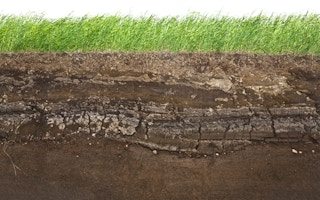Scientists from the US, China and Ireland may have settled one big question about climate change: don’t rely on the soil microbes to help damp down the temperatures. They report in Science that as carbon dioxide levels rise, and temperatures increase, so does the turnover of carbon in the soil.
That means the hope that global warming must mean more energetic plant growth and therefore greater carbon uptake in the soil, in a cycle that engineers like to call negative feedback, looks a bit forlorn.
Kees van Groenigen of Northern Arizona University and colleagues analysed results from 53 different studies of soil carbon measurements in forests, grasslands and farmers’ fields around the world to see how CO2 affects plant growth, soil activity and soil carbon.
They found that extra carbon dioxide in the atmosphere meant more input into the soil – nearly 20 per cent more – but it also meant more turnover, up by more than 16 per cent.
So if more went in, more was released, because the teeming microscopic fauna that inhabit the soil, recycle nutrients and redistribute plant nourishment also became more active.
“
Our findings mean that nature is not as efficient in slowing global warming as we previously thought…By overlooking this effect of increased CO2 on soil microbes, models used by the Intergovernmental Panel on Climate Change may have overestimated the potential of soil to store carbon and mitigate the greenhouse effect
Dr Kees van Groenigen, Northern Arizona University
“Our findings mean that nature is not as efficient in slowing global warming as we previously thought,” said Dr van Groenigen. “By overlooking this effect of increased CO2 on soil microbes, models used by the Intergovernmental Panel on Climate Change may have overestimated the potential of soil to store carbon and mitigate the greenhouse effect.”
Forests’ role
The finding is – as all scientific findings tend to be – provisional, but it does help explain why so much research into the great soil carbon question has been inconclusive. The interplay of increasing carbon dioxide, plants and soil has been under question for years: yes, there is a fertilization effect, for instance, but it may not pay off in more food from food crops.
And the Arizona analyses offer perspective on or even gain substance from other very recent findings. For instance, the fertility of the soil is a factor in the great forest conundrum: are forests sinks or sources of carbon in the atmosphere?
An international team of researchers report in Nature Climate Change that after an analysis of data from 92 studies, they found that forests that flourish in soils that are fertile – rich in nutrients – seem to be able to lock away 30 per cent of the carbon they take from the atmosphere by photosynthesis. But in less fertile places, the plants have to work harder to find nourishment.
“In general, nutrient-poor forests spend a lot of energy – carbon – through mechanisms to acquire nutrients from the soil, whereas nutrient-rich forests can use that carbon to enhance biomass production,” said Marcos Fernandez-Martinez of Spain’s Centre for Ecological Research and Forestry Applications.
And in the same month, a study in the journal Ecology Letters found that feedback from tiny soil-dwelling creatures was the single biggest uncertainty in the great feedback question.
“Soil microbes are responsible for one of the largest carbon dioxide emissions on the planet, about six times higher than fossil fuel burning,” said Oskar Franklin of the Institute for Applied Systems Analysis in Austria.
Microbial methane
In theory, growing forests should soak up that carbon dioxide released by the soil microbes – but as the temperature warms, soil conditions may change – and the feedback effects become harder to predict.
And soil microbes also produce a greenhouse gas that is, molecule for molecule, even more potent than CO2. Swiss and German scientists report in Nature Geoscience that warming temperatures and greater soil activity in the world’s wetlands could end up releasing not just more soil carbon but a lot more methane – 34 times more effective than CO2 as a greenhouse gas over a century, but 84 times more over 20 years – into the atmosphere.
They took a close look at the electrochemical reactions that play off in soil bacteria: wetlands are rich in peat, and when wet the soil bacteria are starved of oxygen, and in no position to release methane. But global warming could change that equation.
The European study clarifies some of the geochemistry of the world’s wetlands. “It also shows that reversible electrochemical processes have the potential to have a large effect on the environment,” said Andreas Kappler of the University of Tubingen, who is also secretary of the European Association of Geochemistry.
“There are uncertainties as to the exact extent, but we estimate that between an extra 10 per cent up to an extra 166 per cent of methane could be released. It also shows that these are fragile ecosystems and that slight changes in their geochemical conditions could have dramatic consequences for the environment.”










